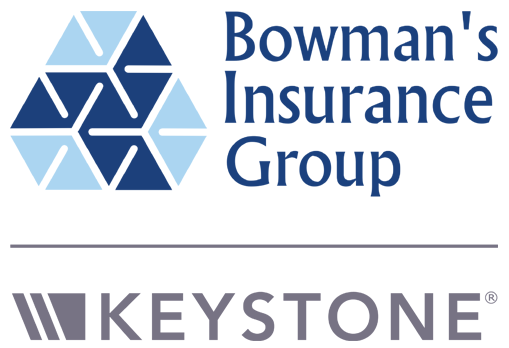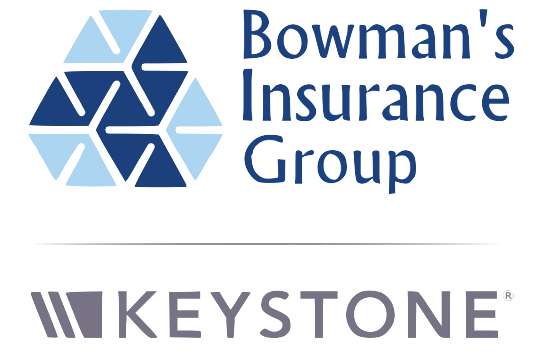
In the ever-evolving landscape of employee benefits, group life insurance stands out as a vital component for small businesses. It not only provides financial security for employees' families but also enhances employee morale and aids in talent retention. This guide will walk you through the essential steps to set up group life insurance for your small business, ensuring that you make informed decisions that benefit both your employees and your organization.
Understanding Group Life Insurance
Group life insurance is a type of life insurance policy that covers a group of people, typically employees of a company. Unlike
individual life insurance policies, group policies are often more affordable and easier to obtain, making them an attractive option for small businesses. This collective approach allows employers to offer a significant benefit to their employees without the burden of high premiums that individual policies often entail.
These policies provide a death benefit to the beneficiaries of employees who pass away while covered under the plan. This financial support can be crucial for families during difficult times, and it reflects positively on the employer's commitment to employee welfare. Furthermore, the peace of mind that comes with knowing their loved ones will be taken care of can significantly boost employee morale and loyalty, fostering a more dedicated workforce.
Types of Group Life Insurance
There are generally two types of group life insurance: term life and whole life. Understanding the differences between these can help you choose the right option for your business. Each type serves different needs and can be tailored to fit the specific circumstances of the organization and its employees.
- Term Life Insurance: This type provides coverage for a specified period, usually ranging from one to 30 years. It is often more affordable and is suitable for businesses looking for cost-effective coverage. Term life insurance is particularly beneficial for younger employees or those in the early stages of their careers, as it provides essential protection at a lower cost during a time when financial commitments may be less burdensome.
- Whole Life Insurance: This policy offers lifelong coverage and includes a savings component that accumulates cash value over time. While it is more expensive, it can be a valuable long-term investment for both the business and its employees. Whole life insurance can serve as a financial planning tool, allowing employees to borrow against the cash value or even use it as a source of retirement income, thus adding another layer of financial security.
Additionally, many group life insurance policies come with options for supplemental coverage, allowing employees to enhance their benefits based on personal needs. This flexibility can be particularly appealing in diverse workplaces where employees may have varying financial situations and family obligations. Employers can also consider offering educational resources to help employees understand their options better, ensuring that they make informed decisions about their coverage.
Assessing Your Business Needs
Before diving into the process of selecting a group life insurance policy, it is crucial to assess your business's specific needs. This involves evaluating the size of your workforce, the demographics of your employees, and the overall budget for employee benefits. A thorough assessment not only helps in choosing the right policy but also ensures that the coverage aligns with your company's values and objectives.
Evaluating Employee Demographics
Understanding the demographics of your workforce can significantly influence the type of coverage you choose. For instance, younger employees may prioritize affordable premiums, while older employees might seek more comprehensive benefits. Conducting a survey or holding discussions can provide valuable insights into what your employees value most in a life insurance policy. Additionally, consider the various life stages of your employees; those with families may have different needs compared to single employees. Tailoring your offerings based on these insights can enhance employee satisfaction and engagement, fostering a more committed workforce.
Budget Considerations
Budgeting for group life insurance is essential. Consider how much your business can allocate towards premiums without straining finances. Many insurers offer flexible payment options, which can help you manage costs effectively. Additionally, remember that while group life insurance is an expense, it can also serve as a valuable tool for employee retention and satisfaction. Investing in a robust benefits package, including life insurance, can position your company as an attractive employer in a competitive job market. Furthermore, consider the potential tax advantages associated with providing group life insurance, as these can offset some of the costs and improve your overall financial strategy.
Researching Insurance Providers
Once you have assessed your business needs, the next step is to research potential insurance providers. This is a critical phase, as the right provider will offer policies that align with your business's requirements and budget. Take the time to gather a list of providers that specialize in the type of coverage you need, whether it's general liability, property insurance, or employee benefits. Understanding the nuances of each provider's offerings can significantly impact your business's financial health and risk management strategy.
Comparing Policies
When comparing policies from different providers, consider the coverage amounts, premium costs, and any additional benefits or riders that may be included. Some policies may offer features such as accidental death benefits or the option to convert to an individual policy later on, which can be appealing to employees. Additionally, evaluate the deductibles and exclusions associated with each policy, as these factors can influence your out-of-pocket expenses in the event of a claim. It's also wise to inquire about any discounts for bundling policies or maintaining a claims-free history, as these can lead to significant savings over time.
Reading Reviews and Testimonials
Reviews and testimonials from other businesses can provide insights into the reliability and customer service of insurance providers. Look for feedback regarding claims processing, responsiveness, and overall satisfaction. This information can help you make a more informed decision. Furthermore, consider reaching out to industry peers or local business associations for recommendations, as they may have firsthand experience with specific providers. Engaging in discussions on professional forums or social media groups can also yield valuable insights into the reputation of various insurers, helping you to identify those that prioritize customer care and transparency in their dealings.
Understanding Financial Stability
Another crucial aspect to consider when researching insurance providers is their financial stability. A provider's financial strength can be assessed through ratings from independent agencies such as A.M. Best, Moody's, or Standard & Poor's. These ratings reflect the insurer's ability to meet its ongoing insurance obligations and can provide peace of mind that your claims will be paid when needed. Additionally, examining the provider's history and track record in the industry can offer further assurance of their reliability. A company with a long-standing reputation and consistent performance is often a safer bet than newer or less established firms.
Engaging with Agents and Brokers
Finally, engaging with insurance agents or brokers can enhance your research process. These professionals can offer personalized advice tailored to your specific business needs and help you navigate the complexities of various policies. They often have access to a wider range of options and can negotiate better terms on your behalf. Don't hesitate to ask them questions about policy details, claims processes, and their experiences with the providers they represent. A knowledgeable agent can serve as a valuable resource, ensuring that you make the best choice for your business's insurance needs.
Choosing the Right Policy
After conducting thorough research, it’s time to choose the right policy for your small business. This decision should reflect both the needs of your employees and the financial capabilities of your business. It’s essential to consider factors such as the size of your workforce, the nature of your business, and the specific risks associated with your industry. A well-chosen policy not only protects your employees but also contributes to a positive workplace culture, demonstrating your commitment to their well-being.
Consulting with an Insurance Agent
Consulting with an insurance agent can be beneficial, especially for those unfamiliar with the intricacies of life insurance. An experienced agent can provide tailored advice, help you navigate the various options, and clarify any complex terms or conditions. They can also assist in comparing different policies and premiums, ensuring that you find a plan that offers the best coverage for your budget. Additionally, a good agent will stay updated on industry trends and changes in regulations that may affect your coverage options, providing you with peace of mind as you make this important decision.
Understanding Policy Terms
Before finalizing your choice, ensure that you fully understand the terms of the policy. Pay close attention to the exclusions, limitations, and the process for filing claims. Being well-informed will prevent potential misunderstandings in the future. It can also be helpful to ask for examples of scenarios where coverage might be denied or limited, as this can shed light on the practical implications of the policy. Furthermore, consider the policy’s flexibility; some policies may allow you to adjust coverage as your business grows or changes, which can be a significant advantage in the long run. Understanding these nuances will empower you to make a decision that aligns with your business goals and employee needs.
Implementing the Group Life Insurance Policy
Once you have selected a policy, the next step is to implement it within your organization. This involves communicating the new benefit to your employees and ensuring they understand how it works.
Communicating with Employees
Effective communication is key to a successful rollout. Organize a meeting or send out an informative email detailing the benefits of the group life insurance policy. Highlight how it works, who is covered, and the process for beneficiaries to claim benefits. Additionally, it may be beneficial to provide a FAQ section that addresses common concerns or misconceptions about life insurance, such as the difference between term and whole life policies, or how premiums are determined.
Providing Educational Resources
Consider providing educational resources, such as brochures or access to online webinars, to help employees understand the importance of life insurance and how to make the most of their coverage. This can foster a culture of awareness and appreciation for the benefits offered. You might also want to invite a representative from the insurance provider to conduct a workshop, allowing employees to ask questions directly and gain insights into their specific situations. Furthermore, creating a dedicated section on your company intranet where employees can access materials, testimonials, and interactive tools can enhance engagement and understanding.
Encouraging Open Dialogue
Encouraging open dialogue about the group life insurance policy can also be instrumental in its successful implementation. Consider setting up a feedback mechanism, such as a suggestion box or an anonymous survey, where employees can express their thoughts and concerns regarding the policy. This not only helps in addressing any lingering doubts but also demonstrates that management values employee input. Regular follow-ups and updates about the policy can keep the conversation going, ensuring that employees feel supported and informed as they navigate their benefits.
Managing the Policy
After implementation, ongoing management of the group life insurance policy is essential. This includes regular reviews and updates to ensure that the coverage remains relevant to your workforce.
Regular Policy Reviews
Conduct regular reviews of the policy, especially during annual benefits enrollment periods. Changes in the workforce, such as new hires or changes in employee demographics, may necessitate adjustments to the coverage. Keeping the policy updated ensures that it continues to meet the needs of your employees. Additionally, it is important to stay informed about any changes in legislation or market trends that could impact the policy's effectiveness. Engaging with insurance providers to discuss potential enhancements or new options can also provide valuable insights that benefit your organization and its employees.
Addressing Employee Questions and Concerns
Encourage employees to ask questions about their coverage and address any concerns they may have. Providing a point of contact within the organization for insurance-related inquiries can help foster trust and transparency. Regularly hosting informational sessions or workshops can further demystify the policy and empower employees with knowledge about their benefits. These sessions can cover topics such as how to file claims, the importance of beneficiary designations, and the implications of life changes like marriage or parenthood on their coverage. By actively engaging with employees and facilitating open dialogue, you create a supportive environment that encourages them to take full advantage of their benefits.
Evaluating the Impact of Group Life Insurance
After the policy has been in place for some time, it’s important to evaluate its impact on your business and employees. This can help you determine whether the investment is yielding the desired benefits.
Gathering Employee Feedback
Solicit feedback from employees regarding their satisfaction with the group life insurance policy. This can be done through surveys or informal discussions. Understanding their perceptions can provide insights into how well the policy is meeting their needs. Additionally, consider holding focus groups where employees can share their thoughts in a more open environment. This approach can foster a sense of community and encourage more candid feedback, allowing you to identify specific areas for improvement or enhancement in the policy.
Assessing Employee Retention and Morale
Monitor employee retention rates and morale to gauge the overall impact of the group life insurance policy. A positive correlation between the implementation of the policy and employee satisfaction can indicate that the investment is worthwhile. Furthermore, tracking metrics such as absenteeism and productivity levels can offer a more comprehensive view of how the policy influences workplace dynamics. If employees feel secure and valued through such benefits, they are more likely to engage fully in their roles, leading to a more vibrant and productive work environment.
Analyzing Cost-Benefit Ratios
In addition to qualitative feedback, it’s essential to analyze the cost-benefit ratios associated with the group life insurance policy. This involves comparing the financial outlay for the insurance premiums against the tangible benefits realized, such as reduced turnover costs and enhanced employee loyalty. By quantifying these elements, businesses can make informed decisions about whether to continue, adjust, or expand their offerings. Furthermore, consider benchmarking against industry standards to see how your policy stacks up against competitors, which can provide valuable insights into potential areas for improvement or innovation.
Reviewing Policy Features and Coverage
Regularly reviewing the features and coverage of the group life insurance policy is crucial to ensure it remains relevant to the evolving needs of your workforce. As demographics shift and employee needs change, it may be necessary to adapt the policy to include additional benefits, such as critical illness coverage or enhanced dependents' benefits. Engaging with insurance providers to explore new options can lead to more comprehensive coverage that better serves your employees, ultimately fostering a culture of care and support within the organization.
Conclusion
Setting up group life insurance for a small business is a significant step towards providing employees with financial security and demonstrating a commitment to their well-being. By following the steps outlined in this guide, business owners can navigate the complexities of selecting and implementing a group life insurance policy effectively.
Ultimately, the goal is to create a supportive work environment where employees feel valued and secure. A well-structured group life insurance policy can play a crucial role in achieving this, benefiting both the employees and the organization as a whole.













